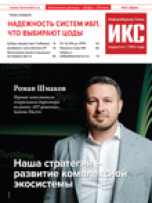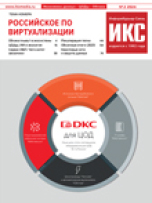| Рубрикатор |  |
 |
| Все новости |  |
World News |  |
 |
Femto World Summit: eyes on offload and LTE, but don’t forget the apps
| 02 июля 2010 |
The femtocell community gathered for its third annual conference in London last week, and there were clear signs that the market was maturing - more big name vendors involved; more than a dozen large operators on board; and extension of the standards to address additional business models.
This is a technology that has moved very rapidly, even by wireless standards - two years ago, it was interesting but untried, and last June it was on the brink of the real world, with Vodafone announcing its first commercial deployment, Sure Signal in the UK. This year it is approaching a mass market, but the danger of such rapid progress is that an industry runs before it can walk.
Many uncertainties lurk in the current deployments, which are focused on residential devices mainly geared to improved indoor coverage. A row over AT&T’s extension of new tiered data charges to femtocell users highlights how regulatory vagaries can impact a business case that has not yet been fully articulated; and even as the market moves towards new markets, such as enterprise and outdoor metro deployments, there are serious question marks over the initial and relatively simple residential case. These include the balancing of the consumer proposition (indoor quality of signal - but should the end user have to pay for that?), with the operator’s real interest, offloading data from the hard-pressed macrocell and building out 4G more cost efficiently.
None of these is unanswerable, and as more carriers unleash commercial services, doubts will be better addressed by real world experience than a host of committee meetings. The industry sector is deservedly proud of its lightning sprint from theory to commercial reality - helped by the fact that, unlike some technologies, femtos offer something carriers actually need. But it needs to beware that the uncertainties inevitably raised by such fast evolution do not turn into a climate of backlash.
One notable contrast with last year’s summit is an apparent narrowing of focus. In 2009, the headlines were live deployments from Sprint and Vodafone, plus demonstration of interoperability standards (the 3GPP’s Iuh interface between the femtocell and femto gateway). But much of the conversation was about applications rather than hardware claims, with the Femto Forum establishing a special interest group for the kind of apps that would extend the business model beyond simple indoor coverage and traffic management/offload. It is understandable that the first stage of real build-outs relies on the relatively simple and obvious business case of improving indoor signals, but if carriers are to achieve their offload objectives - and use femtos to reduce cost of delivery of LTE - they need to appeal to consumers on many different levels. In our opinion, the level of debate and discussion about applications needs to increase in volume again to sustain the second wave of momentum.
There is clear interest in other femtocell applications, as indicated by a survey carried out by Parks Associates for the Femto Forum. The main consumer interest in femtos emerged, unsurprisingly, as indoor coverage, followed by reduced homezone rates, increased battery life because of low power signals, and faster data rates. But in addition, 72% said they would be interested in signing up for proposed femto services such as virtual home numbers, or family noticeboards, with over half of respondents being willing to pay $5 a month for one such service.
This indicates the ability to push the femtocell to users with no coverage issues - vital not just to achieving scale for the industry but addressing cellcos’ offload targets, especially in the urban areas where data strain is often highest, but indoor quality highest. The Parks study found that awareness in the US market, where three cellcos now have femto services, remains low at only 10% of mobile consumers, but once explained, the technology and services appealed to 56%. Of those that were already aware of femtocells, a huge 89% found them appealing. Forum chairman Simon Saunders commented: “Once consumers are told what the benefits are they’re not just interested, but willing to pay for them” - an important point for carriers, which are unwilling to add yet another subsidy bill to their cost base, but have faced criticism from some quarters for, in effect, charging consumers to address poor 3G network quality.
For now, though, the rising rate of deployments is being driven by signal quality on the user side and offload for operators. The second wave will rely on new services, LTE build-out approaches, and emerging markets like the enterprise. Even in stage one, global femtocell deployments have more than doubled in the past nine months, according to a report from Informa, which counts 16 operator commitments including 13 commercial launches - up from eight commitments last November. Informa expects the femtocell market to hit the 49m unit mark by 2014, supporting 114m mobile users. Femto unit sales would reach 25m in 2014 alone.
Next will come expansion into the potentially higher margin corporate sector. Both Vodafone - expanding its residential UK service to business users in Spain - and AT&T, are now focusing on the corporate segment, as the technology evolves to support larger number of users and more advanced enterprise functionality. AT&T’s executive director of radio networks, Gordon Mansfield, told the conference that the cellco has completed its nationwide roll-out of residential femtocells and is now looking to the enterprise. “Femtocells are now available to our customers anywhere in the continental US,” he said. “Now we’re focusing on the enterprise… now we want to integrate femtocells with IP PBXs.” However, he stressed there was no firm timescale for this move.
The operator defended its decision to apply new data caps to its femtocells as well as smartphones and dongles, which seemed to fly in the face of claims about offloading traffic to the tiny base stations. It said the traffic still had to travel via its core, creating congestion issues, because of US regulations insisting that carriers are able to examine all the data on their networks. AT&T sells its MicroCell 3G for $149.99, but customers have the option to take out a dedicated $19.99 monthly plan that provides unlimited femto voice minutes in return for a $100 rebate. Existing AT&T broadband customers can additionally receive an extra $49.99 rebate, which makes the femtocell free.
The next stage is likely to be the use of femtocells to create metrozones outdoors, usurping some of the role traditionally taken by picocells, but bringing femto signature qualities such as advanced self-management. Ubiquisys is one of the specialist vendors building on an initial product range in the home to introduce a metro femto, and according to Informa, Vodafone - which has enthused about the potential of metro deployments for a couple of years - is already using outdoor femto technology in shopping malls in Qatar.
For carriers, of course, looking to relieve data stress on their 3G networks and lower their cost of data delivery with 4G, the real appeal of femtocells is to offload traffic from the macrocell. “The mobile data boom - and the increased demand on capacity it has led to - is the biggest challenge currently facing mobile networks,” said Saunders. “Femtocells represent the natural solution for offloading this data. They allow mobile operators to significantly improve the mobile broadband experience as well as their other services without incurring the costs that macro upgrades would require.”
In a new white paper on this critical offload issue, the Forum expanded on its existing business case model, developed with Signals Research Group, to show that a femtocell can lower the cost per Gb of data delivered by four times with current technology and significantly more with future enhancements.
The white paper says the benefits go beyond easing congestion on the RAN and backhaul. Femtos can also reduce the cost of data delivery and improve quality of service, by offloading signalling traffic from ‘chatty’ smartphones, managed by the radio network controller. This capability is included in 3GPP femto standards and was recently implemented by picoChip for its system-on-chip architecture. Also, in contrast to Wi-Fi offload, revenue generating traffic remains on the operator’s network, since the femto is an extension of the RAN, says the Forum; while the devices allow carriers to respond to data spikes in a rapid and targeted way by deploying new capacity almost overnight.
As well as larger femtocells, stretching concepts like self-management concepts into the former realm of the picocell, the next big market extension will come in LTE. Many carriers are intensely interested in the potential to build out 4G capacity in a highly targeted way, with roll-out cost directly related to the demand for services, by using very small cells. Always in the technology vanguard, Japan’s DoCoMo wants to deploy LTE femtocells as early as 2011-2012. Yoshiyuki Yasuda, its managing director of radio access networks, told the summit he would like to deploy femto and macro cells in parallel to ensure the best balance of coverage and capacity, in relation to capex and user demand. Its first LTE macrocells go live near the end of this year. “We’re looking for which LTE femtos are available by this timeframe,” said Yasuda. “We are receiving some proposals but have not decided yet.”
picoChip has already shown off LTE silicon and reference designs, working with partners like Continuous Computing, and some suppliers are hinting that they could come close to Yasuda’s deadlines. In particular, long time DoCoMo supplier NEC - which is enjoying something of a rebirth in wireless infrastructure thanks to femtocells - has announced it will have an LTE femto ready for friendly user trials next year, though it may not be fully commercial until 2012. DoCoMo’s current main femto supplier for 3G is Mitsubishi.
Источник: 4G Trends
Читайте также:
Ключевые задачи Минцифры Казахстана обсудили на заседании Общественного совета
Опубликован перечень поручений по итогам заседания Совета по стратегическому развитию и нацпроектам
Решения N3COM прошли тестирование на сети LTE ОАО «РЖД»
МТС начинает отключать старые сети 3G
билайн завершил масштабную модернизацию сети в Московской области

















Оставить свой комментарий:
Комментарии по материалу
Данный материал еще не комментировался.